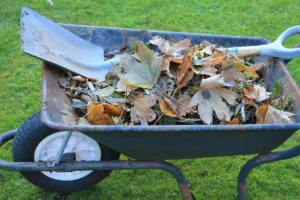Growing fresh herbs and vegetables in an apartment may seem challenging, but vertical hydroponic systems make it possible—even in the smallest spaces. Unlike traditional soil gardening, hydroponics uses nutrient-rich water to nourish plants, eliminating the need for soil while maximizing vertical space. This method is perfect for apartment dwellers looking to grow fresh produce efficiently without the mess of dirt or the hassle of outdoor gardening.
One of the most crucial aspects of maintaining a successful hydroponic system is proper hydration. Unlike conventional gardening, where plants pull moisture from the soil as needed, hydroponic plants rely entirely on a controlled water supply. Maintaining the right water levels, nutrient balance, and circulation is essential to keeping your plants healthy and productive. Poor watering practices can lead to issues like root rot, nutrient deficiencies, or excessive algae growth, all of which can negatively impact plant health.
In this article, we’ll walk you through practical hydration tips specifically designed for vertical hydroponic systems in apartments. Whether you’re new to hydroponics or looking to optimize your current setup, these tips will help you ensure consistent water flow, prevent common issues, and create an efficient system that keeps your plants thriving—all within the comfort of your home.
Understanding Water Circulation in Vertical Hydroponics
Water circulation is at the heart of any hydroponic system, and in vertical hydroponics, ensuring a consistent flow is even more crucial. Unlike traditional soil-based gardening, where roots absorb moisture from the ground, hydroponic plants rely entirely on nutrient-enriched water flowing through the system. There are two primary watering methods used in vertical hydroponic systems: Nutrient Film Technique (NFT) and drip irrigation.
In the Nutrient Film Technique, a thin layer of water continuously circulates over the plant roots, providing a steady supply of nutrients and oxygen. This method is highly efficient, reducing water waste while ensuring that plants receive a consistent nutrient supply. However, it requires careful monitoring to prevent interruptions in water flow, which can quickly stress plants.
Drip irrigation, on the other hand, involves delivering nutrient-rich water to each plant in controlled amounts. This method is particularly useful for vertical gardens because it allows precise watering, reducing the risk of oversaturation or under-watering. Drip irrigation systems can be automated, making them a convenient choice for apartment gardeners who want a low-maintenance solution.
Regardless of the system you choose, maintaining a steady water flow is essential. If the flow is too slow, plant roots may not receive adequate nutrients, leading to poor growth. If it’s too fast, the water may not properly reach all plants, and excess moisture could promote algae or mold growth. Using a reliable pump and checking for clogs in tubing can help ensure a balanced and consistent flow.
Monitoring Water Levels and Quality
Since hydroponic plants rely entirely on water for their nutrients, maintaining the right water levels and quality is vital for a thriving system.
Checking and Maintaining Proper Water Levels
The reservoir is the backbone of any hydroponic system, storing and supplying the necessary water and nutrients. In a vertical system, it’s crucial to monitor water levels frequently. If the water level drops too low, the pump may run dry, leading to system failure. If it’s too high, roots may become waterlogged, increasing the risk of root rot.
A good rule of thumb is to check water levels daily and top off as needed. Many hydroponic gardeners also use automatic water level sensors to track fluctuations and prevent sudden shortages.
Balancing pH and Nutrients
Maintaining the correct pH level is one of the most critical aspects of water management in hydroponics. Most herbs and vegetables thrive in a pH range of 5.5 to 6.5, slightly acidic but optimal for nutrient absorption. If the pH is too high or too low, plants may struggle to take in essential nutrients, leading to deficiencies.
Regularly testing pH levels using a digital pH meter or test strips helps ensure that the water remains within the optimal range. If adjustments are needed, adding pH up or pH down solutions can help restore balance.
Beyond pH, nutrient concentration is another key factor. Over time, as plants absorb nutrients, the balance in the water can shift. Using a Total Dissolved Solids (TDS) or Electrical Conductivity (EC) meter allows you to measure nutrient levels and adjust accordingly. Changing out the nutrient solution every one to two weeks helps maintain optimal growing conditions.
Preventing Water Stagnation and Algae Growth
Stagnant water can quickly become a breeding ground for algae and harmful bacteria, leading to clogged tubes and unhealthy plants. To prevent stagnation:
- Keep water constantly moving by ensuring proper pump operation.
- Use opaque reservoirs to block light, which discourages algae growth.
- Regularly clean and flush the system to remove potential contaminants.
- Add beneficial bacteria or hydrogen peroxide solutions to reduce algae buildup naturally.
By keeping water fresh and clean, you create an environment where plants can thrive without the risk of disease.
Best Practices for Hydration in an Apartment Setting
Gardening in an apartment presents unique challenges, from space limitations to humidity control and the proximity to shared living spaces. Here are some practical hydration tips to keep your vertical hydroponic system efficient, mess-free, and harmonious with your apartment environment.
Choosing and Preparing Your Water Source Thoughtfully:
Not all water sources are created equal when it comes to hydroponics. Tap water, while convenient, often contains chlorine, chloramine, and other minerals that can negatively impact beneficial microbes and plant health over time.
- Consider Alternatives: Explore using filtered water (from a household filter or a dedicated hydroponic filter), rainwater (if safely and cleanly collected), or even distilled water for a pure base.
- Dechlorination is Key: If using tap water, allow it to sit in an open container for 24-48 hours to allow chlorine to dissipate naturally. For chloramine, which doesn’t evaporate as easily, consider using a water filter specifically designed to remove it or a water treatment product available at hydroponic supply stores.
- Temperature Matters: Avoid using extremely cold or hot water directly from the tap. Allow water to reach room temperature before adding nutrients to prevent shocking the plants.
Meticulously Managing Humidity and Preventing Leaks:
Indoor hydroponic gardens introduce moisture into the air, which can be beneficial for some plants but problematic in the confined spaces of an apartment, potentially leading to mold, mildew, and discomfort. Water leaks can also cause significant damage and strain neighborly relations.
- Strategic Dehumidification and Ventilation: Invest in a small, energy-efficient dehumidifier, especially if you notice condensation on windows or consistently high humidity levels. Pair this with good air circulation using fans (oscillating fans are excellent for even distribution) or by opening windows periodically (weather permitting) to prevent stagnant, moisture-laden air.
- Precise Calibration and Monitoring: Carefully calibrate your pumps and timers to deliver only the necessary amount of water. Overwatering in hydroponics is less about the amount of water and more about the duration of saturation, which can lead to root rot. Regularly observe your plants for signs of over or under-watering and adjust your watering schedule accordingly. Consider using moisture sensors in your grow media (if using any inert media like coco coir within your vertical system) as an additional layer of monitoring.
- Robust Leak Prevention Strategies: Go beyond just placing a mat. Use deep, durable trays or containers beneath your entire system to catch any spills or leaks. Double-check all tubing connections, ensuring they are secure and properly fitted. Consider using hose clamps for added security. Regularly inspect tubing for wear and tear or potential blockages that could cause overflows. When setting up your system, think about the flow of water and ensure there are no points where it could easily escape.
Optimizing Water Usage and Exploring Recycling Options:
While hydroponics is inherently water-efficient compared to traditional gardening, further optimization can reduce your environmental footprint and save on water and nutrient costs.
- Smart Recycling Systems: If your system design allows, implement a closed-loop recirculating system where the nutrient solution drains back into the reservoir to be reused. This significantly reduces water waste but requires careful monitoring of nutrient levels and potential pathogen buildup. Regularly test and adjust the nutrient solution in a recirculating system.
- Greywater Diversion (with Caution): In some cases, carefully collected and filtered greywater (e.g., from rinsing vegetables) might be considered for non-food plants in a separate system, but this requires thorough research and careful management to avoid introducing harmful substances or pathogens to your hydroponic setup, especially if you are growing edibles. This is generally not recommended for beginner hydroponic gardeners.
- Strategic Plant Grouping: Group plants with similar watering needs together within your vertical system. This allows for more tailored watering schedules for different sections, potentially reducing overall water usage.
- Minimize Evaporation: Use opaque reservoirs with tight-fitting lids to reduce water evaporation, especially in warmer apartment environments.
By implementing these best practices, you can create a thriving, efficient, and apartment-friendly vertical hydroponic system that minimizes water waste, prevents potential issues, and allows you to enjoy fresh, homegrown produce without disrupting your living space or your neighbors.
Conclusion
Hydration is one of the most important aspects of maintaining a healthy vertical hydroponic system, especially in an apartment setting. Ensuring proper water circulation, keeping the nutrient balance in check, and preventing stagnation and algae growth all contribute to a thriving indoor garden. Whether you’re using Nutrient Film Technique (NFT) or drip irrigation, maintaining a consistent water flow is essential for strong root development and steady plant growth.
To get the best results, it’s important to monitor and adjust your watering routine as needed. Regularly checking water levels, pH balance, and nutrient concentrations helps prevent issues before they arise. Using filtered or dechlorinated water, keeping humidity levels in check, and ensuring leak prevention will make your system more efficient and apartment-friendly.
A successful hydroponic garden doesn’t require constant maintenance, just smart practices. By fine-tuning your hydration schedule, staying proactive about system upkeep, and using sustainable watering methods, you can enjoy a fresh, homegrown supply of herbs and vegetables year-round—right in your apartment. With the right approach, hydroponic gardening can be both hassle-free and highly rewarding, allowing you to grow fresh produce no matter how small your space.




